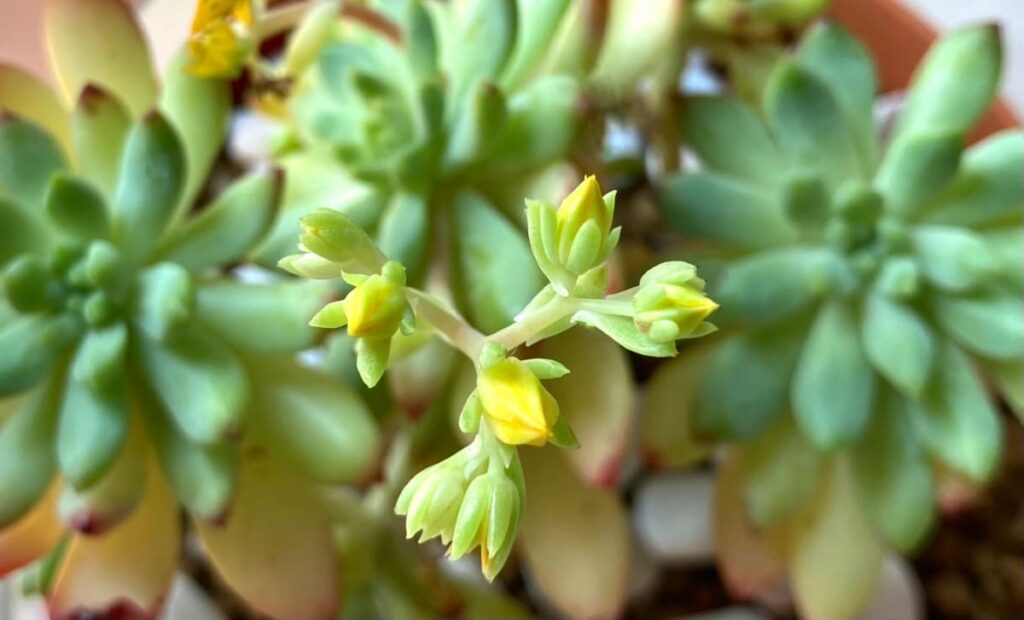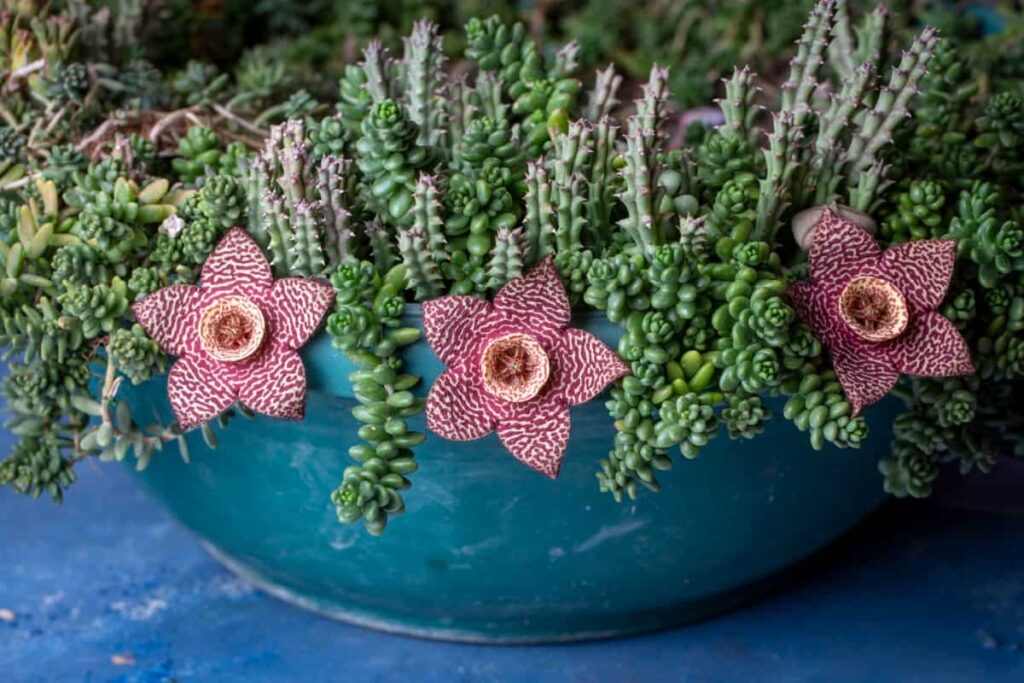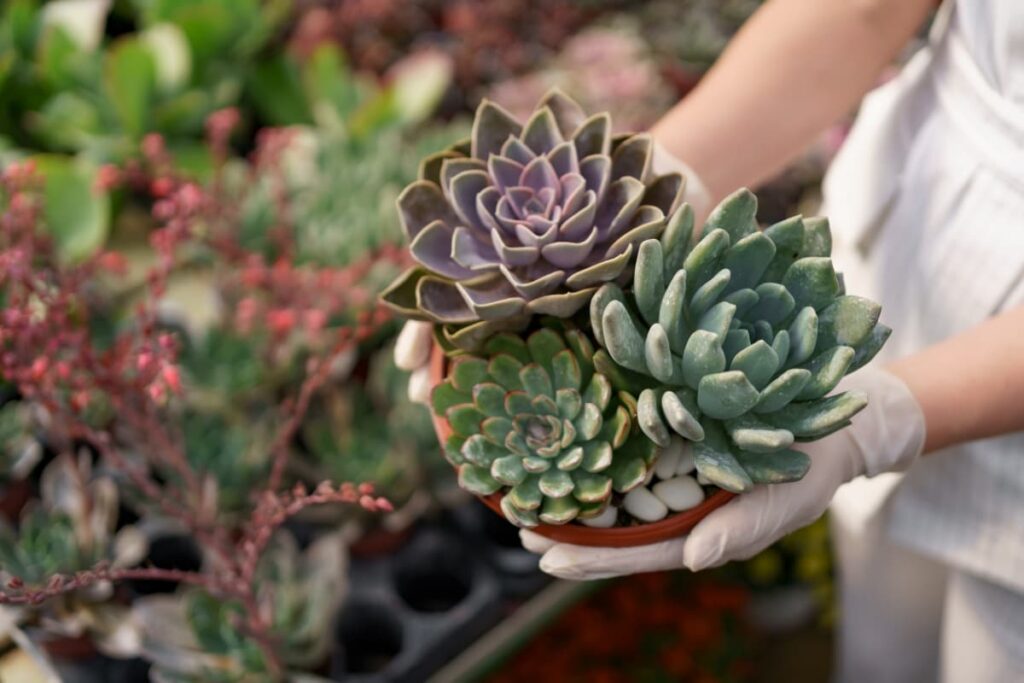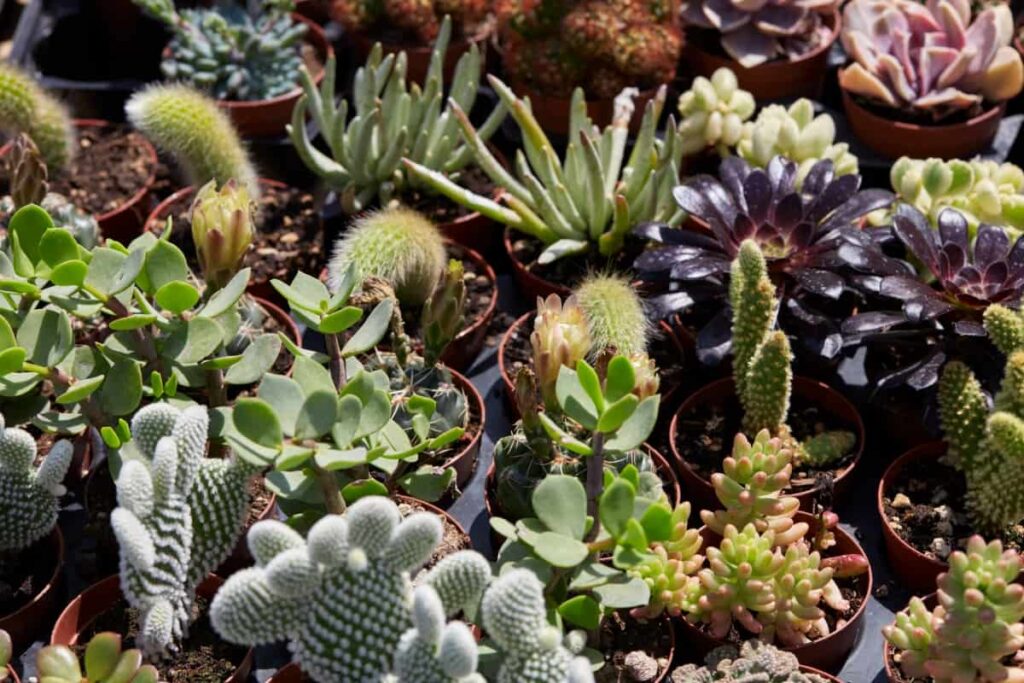Succulents typically bloom in response to environmental cues such as changes in temperature, light, and moisture levels. Their blooming cycle varies depending on the species, but generally, succulents bloom during specific seasons or in response to specific conditions. Some succulents may bloom annually, while others may only bloom once every few years.
Factors Influencing Succulent Flowers
- Adequate sunlight is essential for increasing succulent flowers.
- Succulents may require specific temperature ranges to initiate blooming.
- Overwatering or underwatering can inhibit blooming.
- Proper nutrition, including the presence of essential minerals, is crucial for healthy flowering.

10 Reasons Why Your Succulents Not Blooming
Insufficient Light: Light Requirements for Succulents
Identifying Light Deficiency Symptoms
- Succulents will stretch towards a light source, resulting in leggy growth with elongated stems between leaves.
- Succulents may fail to produce flowers or have reduced flowering when they don’t receive enough light.
- Lack of adequate light can result in slow growth or even stagnation in succulents, leading to smaller plant size and fewer new leaves.
Solutions for Increasing Light Exposure
- Choose a spot with more direct sunlight, such as a south-facing window or balcony, to provide sufficient light for your succulents.
- Supplement natural light with artificial grow lights, especially during darker months or if natural light is limited in your space.
- Rotate your succulent pots regularly to ensure all sides receive equal light exposure.
Improper Watering Practices
Overwatering vs. Underwatering Symptoms
Underwatering Effects on Succulents
- An underwatered plant will start to have wrinkly, shriveling leaves as its water storage continues to run low.
- They will start to look droopy and wilted the more severe the water deprivation is.
- Plenty of dried-up, dead leaves from the bottom of the plant.
Overwatering Symptoms in Succulents
- An overwatered plant will have soft, mushy leaves that may also appear shriveled.
- The leaves will rot, and you will see them turn black.
- An overwatered plant will also drop its leaves. The leaves become overly saturated with water, and they swell up and start dropping leaves.
Adjusting Your Watering Schedule
Ensure thorough saturation of the soil, allowing excess water to drain out through the bottom of the pot for watering succulents for bloom. Then, the soil can be allowed to dry before watering again. Succulents prefer periods of drought between watering sessions. During the cooler months or in humid conditions, you may need to water less frequently, while hot and dry conditions require more frequent watering.
Nutrient Imbalances
Recognizing Signs of Nutritional Deficiencies in Succulents
- Yellowing of leaves, often starting at the tips and edges, can indicate a lack of essential nutrients such as nitrogen or iron.
- Succulents may exhibit slow growth or fail to produce new leaves if they lack sufficient nutrients for proper development.
- Brown spots, necrosis, or unusual patterns on leaves can be signs of nutrient deficiencies, like potassium or magnesium.
Fertilizing for Optimal Growth and Blooming
Select a fertilizer specifically formulated for succulents or use a general-purpose fertilizer with a balanced NPK ratio (nitrogen, phosphorus, potassium) for fertilizing succulents to flower. Apply fertilizer typically during the growing season from spring to fall. Avoid fertilizing during dormancy periods or when plants are stressed. The fertilizer should be diluted to half strength to avoid root burn.
Incorrect Temperature Conditions
Ideal Temperature Ranges for Succulent Blooming
- Daytime temperatures: Most succulents prefer daytime temperatures between 18°C- 29°C for optimal growth and blooming.
- Nighttime temperatures: Cool nights with temperatures around 10°C to 13°C can promote flower bud formation and enhance blooming in some succulent species.
Managing Temperature Stress
- During heatwaves or cold snaps, move succulents indoors or provide temporary protection with shade cloth, frost cloth, or cold frames to shield them from extreme temperature fluctuations.
- When transitioning succulents between indoor and outdoor environments or moving them to a new location with different temperature conditions, acclimate them gradually over several days to minimize temperature shock.
- To prevent temperature impact on succulent blooming, apply a layer of organic mulch around the succulent’s base to insulate the soil and help regulate soil temperature fluctuations.
In case you missed it: 10 Reasons Why My Orchids are Not Blooming: Remedies and Treatment

Pot and Soil Problems
Choosing the Right Pot and Soil Type
- Ideal Pot Types for Succulents: Opt for pots with adequate drainage holes to prevent water pooling at the bottom and causing root rot. Choose a pot size that allows for adequate root growth without excessive soil moisture retention.
- Soil type: Use the best soil for succulent growth specifically formulated for succulents and cacti, or create DIY by mixing equal parts of potting soil, perlite, and coarse sand. Avoid heavy or water-retentive soils, as they can lead to root suffocation and rot.
Repotting for Healthier Growth
- Repotting succulents for health when they outgrow their current containers or when you notice signs of root-bound growth, such as roots circling the pot’s bottom or protruding through drainage holes.
- Loosen the soil around the roots gently and carefully lift the succulent out of its current pot, ensuring no damage to the roots or stems.
- Remove any old, compacted soil from the roots and inspect them for signs of damage or rot. Repot the succulent into fresh, well-draining soil, ensuring the roots are spread out evenly.
- After repotting, give the succulent some time to adjust to its new environment before resuming normal watering and care routines. Avoid direct sunlight or excessive moisture during this period to prevent stress.
Age and Maturity of the Plant: Succulent Maturity And Flowering
Understanding Growth Stages
Young succulents focus on establishing roots and adapting to their environment. Growth during this stage may be slow as the plant prioritizes root development. As succulents mature, they enter a period of active growth characterized by increased leaf, stem, and root development. This stage may vary in length depending on the species and environmental conditions.
Patience with Young Succulents
Young succulents require patience as they establish a strong root system. Avoid disturbing the roots unnecessarily and provide consistent care to promote healthy growth. While young succulents may initially appear small or slow-growing, they will gradually increase in size and vigor with proper care and patience.
Lack of Stress
The Role of Stress in Flowering
Succulents may produce flowers as a response to stress factors such as drought, temperature fluctuations, or nutrient deficiencies. Flowering under stress conditions can be a survival mechanism for succulents to ensure genetic propagation and continuation of the species.
Safe Stress Techniques for Succulent Blooming
Controlled drought stress: Intentionally allowing the soil to dry out slightly between waterings can simulate drought conditions and encourage succulents to produce flowers. However, it’s essential to monitor the plant carefully and avoid prolonged periods of drought that could harm the plant.
Temperature stress: Exposing succulents to mild temperature fluctuations, such as cooler nighttime temperatures or slightly warmer daytime temperatures, can mimic seasonal changes and promote flower bud formation.
Pest and Disease Issues
Common Pests and Diseases Affecting Blooming
Pests: Common pests that may affect succulent flowering include aphids, spider mites, mealybugs, and scale insects, which can damage foliage and inhibit blooming by draining the plant’s resources or causing stress.
Diseases: Fungal diseases such as root rot, powdery mildew, and fungal leaf spots can weaken succulents and interfere with their ability to bloom by affecting overall plant health and vigor.
Prevention and Treatment Methods
Prevention: Maintain good cultural practices, including proper watering, adequate airflow, and regular inspection for signs of pests or diseases. Quarantine new plants before introducing them to your succulent plant collection to prevent the spread of pests or succulent disease prevention.
Treatment: If pests or diseases are detected, take prompt action to treat affected succulents. Use insecticidal soaps, neem oil, or horticultural oils for pest control for flowering succulents, and apply fungicides to manage fungal diseases. Remove and dispose of severely infected plant parts to prevent the spread of disease.
In case you missed it: 10 Best Natural Pesticides for Vegetable Garden: 100% Effective to Kill Bugs on Vegetable Plants

Seasonal Changes and Dormancy
Recognizing Dormancy Periods
Environmental cues: Succulent dormancy and blooming in response to changes in daylight hours, temperature, and moisture levels. Shorter daylight hours and cooler temperatures signal the onset of dormancy in many species.
Growth slowdown: During dormancy, succulents may exhibit reduced growth, with slower or no new leaf or stem development. Flowering may also cease during this time.
Changes in appearance: Succulents may show signs of dormancy, such as fading leaf color, shriveling or wrinkling of leaves, or a tendency to drop older leaves.
Seasonal Care for Succulent Flowers
- During dormancy, succulents require less frequent watering as their growth slows down. The soil should be allowed to dry out between two successive waterings to prevent root rot and overhydration. Water sparingly but deeply when needed, ensuring excess water drains away.
- While some succulents may continue to bloom during dormancy, they still require sufficient light to maintain their overall health. Place them in bright, indirect light to ensure they receive adequate energy for metabolic processes.
- Reduce or stop fertilizing succulents during dormancy, as they have reduced nutrient requirements during this period of slowed growth. Resuming fertilization when they resume active growth in the spring can help support flowering and overall health.
- During dormancy, succulents may be more susceptible to damage from extreme temperatures. Protect from frost, freezing temperatures, or excessive heat to prevent stress and maintain plant health.
In case you missed it: 10 Best Natural Pesticides for Indoor Plants: 100% Effective to Kill Bugs on Houseplants

Conclusion
By addressing these succulent blooming issues, you can create optimal conditions for your succulents to thrive and bloom. Implementing appropriate remedies and treatments tailored to specific issues for encouraging succulent flowers in your garden or indoor space.
- Profitable Village Farming Business Ideas in 2024
- High-Yield Aquaculture: Fast-Growing Fish for Farming
- Effective Fish Pond Construction Techniques for Beginners
- Irrigation and Water Management in Pineapple Farming
- Blossom to Harvest: Mastering Flowering and Pollination in Papaya Farming
- Pig Fattening Essentials: From Selection to Sale for Beginners
- Raising Wagyu Cattle: A Complete Guide for Premium Beef Production
- Soil Types and Their Water Holding Capacity
- Optimizing Irrigation Schedules for Coconut Groves for Enhanced Yield
